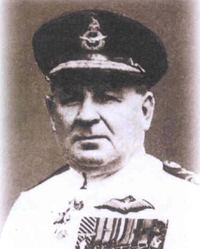SLAF History : The Barker Years

 By the time the RCyAF commenced the Barker Years (i.e. post 1958), No. 1 Squadron had been split into No. 1 Squadron, commanded by Flt Lt Vivekananthan and No. 2 Squadron commanded by Flt Lt Paddy Mendis. The split was effected on 01 September 1957. No 1 Squadron, which continued to handle flight-training duties, operated the Chipmunks and Balliols
By the time the RCyAF commenced the Barker Years (i.e. post 1958), No. 1 Squadron had been split into No. 1 Squadron, commanded by Flt Lt Vivekananthan and No. 2 Squadron commanded by Flt Lt Paddy Mendis. The split was effected on 01 September 1957. No 1 Squadron, which continued to handle flight-training duties, operated the Chipmunks and BalliolsThe newly formed operational No. 2 Squadron, which handled transport and patrol duties, flew the Oxford Airspeed, Prestwick Pioneer and De Havilland Dove aircraft. The Dragonfly S51 helicopter (the RCyAF's first helicopter) was also on the strength of No. 2 Squadron, but to all intents and purposes, was a separate flight under the command of Flying Officer Mahendra Situnayake. Both squadrons were based in Katunayake, which station had Sqn Ldr Short, as Officer Commanding.
1958 saw the RCyAF s first major tragedy in the form of an air accident. It involved a Dove aircraft from No. 2 Squadron piloted by Flt Lt Varatharasa, which crashed on take-off into the oil storage tanks at China Bay airfield in the Trincomalee area, killing all five persons on board. In addition to the pilot, there were Flt Lt Shibley and Lt Peiris and an Engineering Officer of the British Army, Major Hacker and Sergeant Guy.
The year 1959 saw further expansion of the RCyAF. Commander Barker realized that if the RCyAF was to play the role set out for it, in legislation, he would need more aircraft to strengthen the No. 2 Operational Squadron. Thus it was that in September 1959 a team of RCyAF men led by Sqn Ldr Short and comprising Flt Lts Harry Goonetileke, Dick C. Perera and A. Walter Fernando set off for the UK in a Dove, to bring back two De Havilland Heron aircraft purchased by Ceylon. On the ferry flight back from the UK, they were in formation sharing the service of just one navigator.














